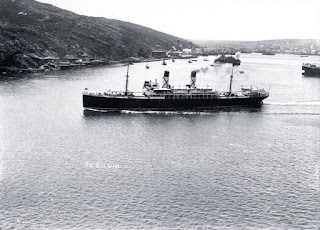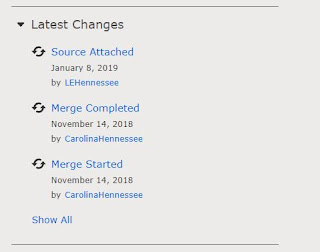Ellis Island Ancestor
This last weekend we drove north to visit Ellis Island, the Statue of the Liberty, and some of New York City. First stop, Ellis Island. In 2015, Peopling of America Center opened. This is a gallery covering the hundreds of years before Ellis Island started processing immigrants (1892-1954) and covering time afterwards. This gallery really helped tell the whole picture of how America is how it is today. If I hadn't had five kids, I would have tried to read and enjoy every display. There is also a museum that helped us all realize what life would have been like for these immigrants.
It is estimated that forty percent of all U.S. citizens can trace at least one of their ancestors to Ellis Island. I can not. Unless you count the ancestor that was not actually immigrating at the time. The vast majority of my ancestors came to the United States much earlier. I have one immigrant grandmother who immigrated here in 1954. Ellis Island was hardly being used then and she was not processed there.
The one ancestor that I have found in the Ellis Island passenger search is Joseph W. Scollick. He is listed in the results as J.W. Scollick. He arrived in 1903 with his residence as Washington, D.C. He sailed on the ship "Silvia." From a web page with the title "Ships of the Red Cross Line:"
Arriving on July 21, 1904, J.W. Scollick, an osteologist at the Smithsonian or National Museum, was returning home in Washington, D.C. after a trip to Newfoundland to make a cast of a blue whale. He was working there with two others, Frederic A. Lucas, chief osteologist and head of exhibits and another assistant, William Palmer, chief taxidermist. All working for the National Museum. They traveled with the skeleton and molds in several large crates. For more about their trip, read here.
This was a six day trip by ship from St. John's, Newfoundland to Ellis Island. According to current maps and automobile averages, the trip is 6.5 hours by car from the Hermitage Bay (location of the whale work). Perhaps they traveled by boat from St John's to Balaena [I need to investigate further to determine how they traveled in 1904. I imagine it was train from NY to DC].
Although these government employees traveled through Ellis Island, they were not detained or required to undergo inspection. That was reserved for third class passengers. On examination of the ship's manifest, there were many that were detained, some because they were considered stowaways.
It is estimated that forty percent of all U.S. citizens can trace at least one of their ancestors to Ellis Island. I can not. Unless you count the ancestor that was not actually immigrating at the time. The vast majority of my ancestors came to the United States much earlier. I have one immigrant grandmother who immigrated here in 1954. Ellis Island was hardly being used then and she was not processed there.
The one ancestor that I have found in the Ellis Island passenger search is Joseph W. Scollick. He is listed in the results as J.W. Scollick. He arrived in 1903 with his residence as Washington, D.C. He sailed on the ship "Silvia." From a web page with the title "Ships of the Red Cross Line:"
The SS Silvia, formerly known as the Baghdadi, was purchased in 1892 from the Persian Gulf SS Co., London. The Silvia was placed into service on the St. John's to New York run, about May 1894, to temporarily replace the Miranda. However, with the loss of the Miranda later that year, she continued to provide service on the St. John's to New York run. On March 14, 1908, the Silvia was wrecked in Vineyard Sound, off Massachusetts, on a passage from New York to St. John's. Reproduced courtesy of Memorial University Libraries.
This was a six day trip by ship from St. John's, Newfoundland to Ellis Island. According to current maps and automobile averages, the trip is 6.5 hours by car from the Hermitage Bay (location of the whale work). Perhaps they traveled by boat from St John's to Balaena [I need to investigate further to determine how they traveled in 1904. I imagine it was train from NY to DC].



Comments
Post a Comment